Plant Experience
Detail
How to Care for Orchids – Phalaenopsis Orchid Care
In this article we’ll cover how to care for orchids – focusing specifically on the Phalaenopsis orchid. Soon you’ll see that Phalaenopsis orchid care isn’t terribly difficult, once you know the basics – and because of a few unique characteristics of this highly popular orchid variety (as you’ll discover in a moment). First, a few important things that you should know.
Phalaenopsis (“fayl-eh-NOP-siss) orchids are often referred to as the “moth orchid” due to their flowers’ supposedly resembling the flying insect. The growing environment of the Phalaenopsis orchid is comfortable for humans, and for this reason, they are the most popular type of household orchid. Another reason they are so popular is because they have the ability to bloom for months at a time and also can also rebloom! Phalaenopsis blooms come in a wide range of shapes, sizes, and colors.
Water Requirements
Phalaenopsis roots must grow in damp conditions so it is important to never let the roots dry out, however, it is also important to make sure that the roots don’t sit in standing water because this can lead to the roots rotting. Watering frequency – as covered in this article about watering orchids – can be determined by a few different things. One factor to consider is the time of year. While the orchid is in active growth, during the warmer months, you will want to water more frequently (generally every day or every other day), and less frequently (generally about every 7-10 days) in the cooler months. A Phalaenopsis orchid should be watered in the morning using tepid water. This will give the orchid adequate time to dry before the lower night temperature sets in. Remember, is very important to not let the Phalaenopsis’ roots dry out completely.
Light Requirements
As covered in this article about orchids care and light, Phalaenopsis orchids need low light intensity in order to thrive. If your Phalaenopsis orchid is receiving too much light, the leaves will become a yellow-green color and could possibly develop a red-tint around the leaves edges, and too little light will cause the leaves to become a very dark green color. The best place to grow you Phalaenopsis orchid indoors in on an east facing windowsill, although a shaded south facing window will also work. It is important to not let your Phalaenopsis orchid get direct sunlight because this could cause sunburn to the plant.
Temperature Requirements
As discussed in this orchid plant care article on temperature, the ideal daytime temperatures to grow your Phalaenopsis orchid is between 70°F to 80°F (21.1°C to 26.6°C), and night temperatures should be about 65°F (18.3°C). Phalaenopsis orchids are able to sustain temperatures between to 85°F to 95°F (29.4°C 35°C ), although they will need more frequent watering in order to ensure that they do not completely dry out. In order to help encourage the growth of flower spikes, the temperature should be dropped to 55°F (12.8°C) few a few weeks in the fall. If your Phalaenopsis orchid becomes too hot or too cold this could damage the flowers and lead to bud blast which is when the flower buds fall off before they are able to open and be enjoyed.
Humidity Requirements
As covered in this “humidity” article on how to care for orchids, Phalaenopsis orchids thrive in humidity levels of at least 50 percent or higher. The humidity level can be easily increased in your orchids growing area by placing your orchid on a humidity tray. These are found in orchid specialty stores and sometimes also in home improvement stores. You can easily create your own by setting the orchid’s pot on top of a tray filled with water and pebbles. Remember, it is important that your orchid’s roots do not directly sit in the water. When you have high humidity levels, it is equally important to maintain proper air movement to prevent orchid disease from developing. You can increase air movement for your orchid by placing an oscillating fan nearby.
Fertilizer Requirements
Phalaenopsis orchids should be fertilized regularly (generally once a month). Remember to only fertilize your orchid when the potting medium is damp. Never fertilize a dry orchid because this can cause major root damage. It is important to flush out any excess fertilizer (once a month) so that the excess build-up of salt does not do damage to the plant’s roots or leaves.
Potting Requirements
Phalaenopsis orchids should be repotted once every one to three years or once the potting medium remains soggy and no longer drains properly. You will want to repot during the spring after the orchids flowers have bloomed. Before repotting your orchid, you should trim away any damaged or rotting roots with a sterile cutting tool. Phalaenopsis orchids tend to do very well in plastic pots since they can retain moisture for longer than clay pots.
In this article we’ll cover how to care for orchids – focusing specifically on the Phalaenopsis orchid. Soon you’ll see that Phalaenopsis orchid care isn’t terribly difficult, once you know the basics – and because of a few unique characteristics of this highly popular orchid variety (as you’ll discover in a moment). First, a few important things that you should know.
Phalaenopsis (“fayl-eh-NOP-siss) orchids are often referred to as the “moth orchid” due to their flowers’ supposedly resembling the flying insect. The growing environment of the Phalaenopsis orchid is comfortable for humans, and for this reason, they are the most popular type of household orchid. Another reason they are so popular is because they have the ability to bloom for months at a time and also can also rebloom! Phalaenopsis blooms come in a wide range of shapes, sizes, and colors.
Water Requirements
Phalaenopsis roots must grow in damp conditions so it is important to never let the roots dry out, however, it is also important to make sure that the roots don’t sit in standing water because this can lead to the roots rotting. Watering frequency – as covered in this article about watering orchids – can be determined by a few different things. One factor to consider is the time of year. While the orchid is in active growth, during the warmer months, you will want to water more frequently (generally every day or every other day), and less frequently (generally about every 7-10 days) in the cooler months. A Phalaenopsis orchid should be watered in the morning using tepid water. This will give the orchid adequate time to dry before the lower night temperature sets in. Remember, is very important to not let the Phalaenopsis’ roots dry out completely.
Light Requirements
As covered in this article about orchids care and light, Phalaenopsis orchids need low light intensity in order to thrive. If your Phalaenopsis orchid is receiving too much light, the leaves will become a yellow-green color and could possibly develop a red-tint around the leaves edges, and too little light will cause the leaves to become a very dark green color. The best place to grow you Phalaenopsis orchid indoors in on an east facing windowsill, although a shaded south facing window will also work. It is important to not let your Phalaenopsis orchid get direct sunlight because this could cause sunburn to the plant.
Temperature Requirements
As discussed in this orchid plant care article on temperature, the ideal daytime temperatures to grow your Phalaenopsis orchid is between 70°F to 80°F (21.1°C to 26.6°C), and night temperatures should be about 65°F (18.3°C). Phalaenopsis orchids are able to sustain temperatures between to 85°F to 95°F (29.4°C 35°C ), although they will need more frequent watering in order to ensure that they do not completely dry out. In order to help encourage the growth of flower spikes, the temperature should be dropped to 55°F (12.8°C) few a few weeks in the fall. If your Phalaenopsis orchid becomes too hot or too cold this could damage the flowers and lead to bud blast which is when the flower buds fall off before they are able to open and be enjoyed.
Humidity Requirements
As covered in this “humidity” article on how to care for orchids, Phalaenopsis orchids thrive in humidity levels of at least 50 percent or higher. The humidity level can be easily increased in your orchids growing area by placing your orchid on a humidity tray. These are found in orchid specialty stores and sometimes also in home improvement stores. You can easily create your own by setting the orchid’s pot on top of a tray filled with water and pebbles. Remember, it is important that your orchid’s roots do not directly sit in the water. When you have high humidity levels, it is equally important to maintain proper air movement to prevent orchid disease from developing. You can increase air movement for your orchid by placing an oscillating fan nearby.
Fertilizer Requirements
Phalaenopsis orchids should be fertilized regularly (generally once a month). Remember to only fertilize your orchid when the potting medium is damp. Never fertilize a dry orchid because this can cause major root damage. It is important to flush out any excess fertilizer (once a month) so that the excess build-up of salt does not do damage to the plant’s roots or leaves.
Potting Requirements
Phalaenopsis orchids should be repotted once every one to three years or once the potting medium remains soggy and no longer drains properly. You will want to repot during the spring after the orchids flowers have bloomed. Before repotting your orchid, you should trim away any damaged or rotting roots with a sterile cutting tool. Phalaenopsis orchids tend to do very well in plastic pots since they can retain moisture for longer than clay pots.
Album (9)
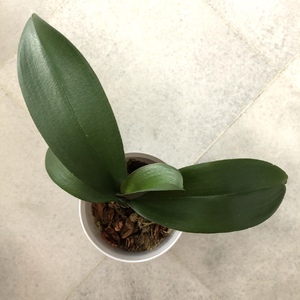
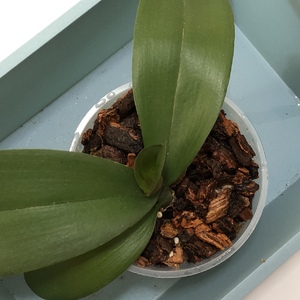
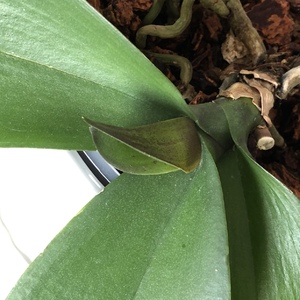
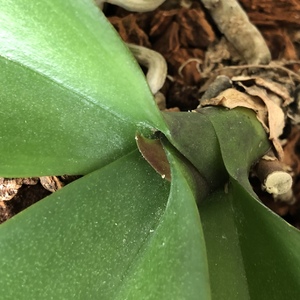
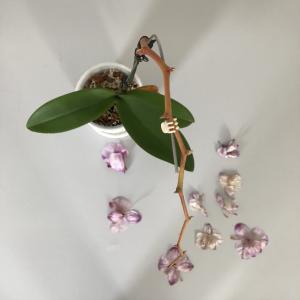
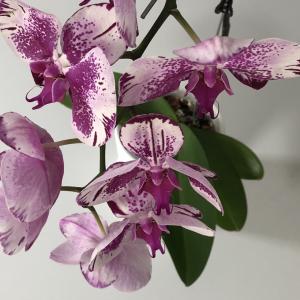
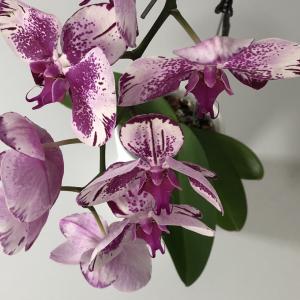

kensong
2018-07-02

Spotted mold and dead roots on my Phal so repotted with fresh bark and sphagmum moss after cutting off dead roots. Hopefully it does well as it has been repotted too often. The leaves look great though including the new ones.


kensong
2018-06-17

Repotted my Phal because it was leaning too much. New leaves are growing well.


kensong
2018-06-13

New leaves are super slow to grow but definite progress.


kensong
2018-05-31

Okay, this is my first Phalenopsis (moth orchid). This is about 2 weeks after I cut off its flower stalks after they dropped. Then I repotted. Is this a new leaf I see? Why is it brown red?


kensong
2018-05-12

Went for a two week vacation and left this moth orchid in my office to be cared for. Came back to this 😥




kensong
2018-04-03

Repotted with bark, perlite and pumice.


kensong
2018-03-23

This is my first growing diary.
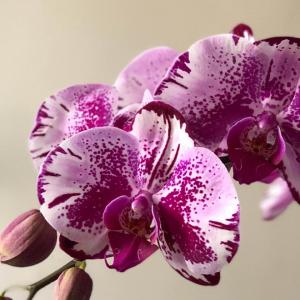

Elite Article













